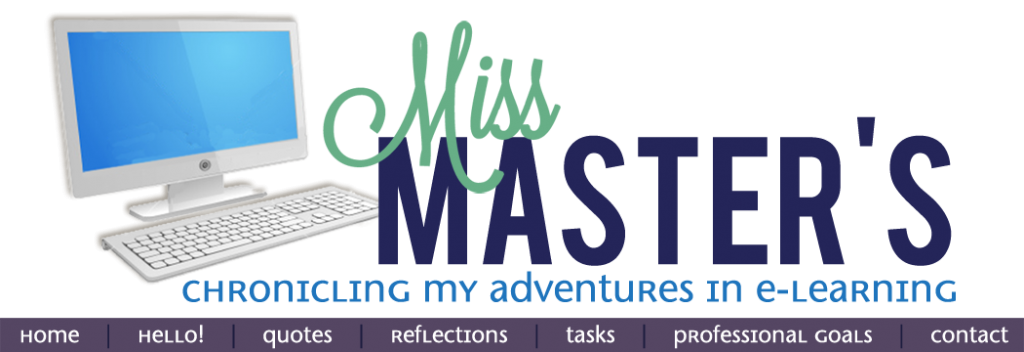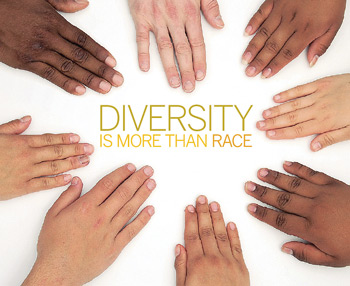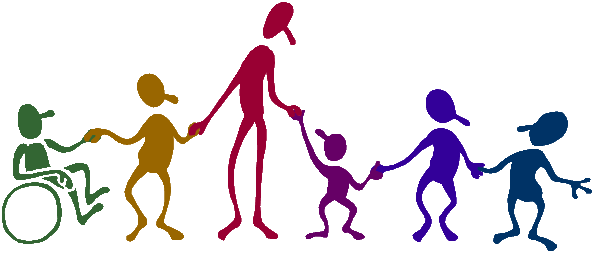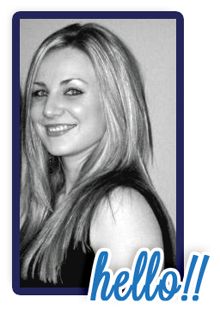“We have all felt like an outsider in
some way, and in that way, we are all the same”
-Brian Steel
What memory do you have of an incident when you experienced bias,
prejudice, and/or oppression, or witnessed someone else as the target of bias,
prejudice, and/or oppression? Keep in mind that one can encounter such
incidents in real contexts, including online environments, as well as in
fictional ones, such as movies, books, television shows, and the like.
I have already discussed several
different examples in which I have witnessed or experienced prejudice, bias and
oppression first hand during previous assignments and discussions of this
course. For this blog task I decided to discuss an example that I have not yet
described.
 For two years I worked on contract as a core
and immersion French teacher at a public high school in my home town. I was
shocked and dismayed at the cruelty and torment some students faced and were
subject to on a daily basis. They were ridiculed for the clothes they were,
where they lived, who they were friends with even things as ridiculous as the
color of their hair. Now bullying is not anything new, we’ve all seen it happen
during our lifetime in one form or another. What has changed however, is how
easy it has become. Social media, cell phones, YouTube etc. have been placed at
almost every teenagers fingertips. I had one student how had a learning
disability. He could not step foot into the school without feeling harassed and
victimized. What really baffles me is how or why others choose targets. This
boy was so kind, bright and athletic. He used assistive technology to help with
reading in all courses and had a laptop provided to him by the school. Students
would shout names like “retard” “dumbass” etc. on a daily basis. Teachers, his
parents, guidance counsellors and even administrators intervened. It stopped
during school hours but he expressed that he was still receiving cruel emails
and Facebook messages daily. He began refusing to bring his laptop to classes
for fear of being ridiculed. He once told a panel of us (teachers, his parents
and administration) that: “I wish I was fully retarded instead of just slow and
stupid, maybe then they would leave me alone, no one picks on someone who is
really retarded do they”? This comment brought tears to my eyes. This poor
child wished that he had a severe mental handicap to avoid being tormented.
After this comment the police were called in to do a school wide presentation
about cyber bullying and its repercussions and consequences referencing both
suicides due to harassment and criminal charges for offenders. I believe that
the harassment stopped after that presentation but I cannot be too sure. The
family moved shortly after so that their son could have a fresh start for his
three remaining years of high school. I’m sure he was glad to move. No child
should ever have to face such torment and cruelty. No person should ever be
exposed to such torture and lack of compassion and empathy. I was truly
dismayed that such actions could occur relentlessly. Although action was taken,
students’ suspended etc., children need to be taught about tolerance and
acceptance early on so that such things will not happen.
For two years I worked on contract as a core
and immersion French teacher at a public high school in my home town. I was
shocked and dismayed at the cruelty and torment some students faced and were
subject to on a daily basis. They were ridiculed for the clothes they were,
where they lived, who they were friends with even things as ridiculous as the
color of their hair. Now bullying is not anything new, we’ve all seen it happen
during our lifetime in one form or another. What has changed however, is how
easy it has become. Social media, cell phones, YouTube etc. have been placed at
almost every teenagers fingertips. I had one student how had a learning
disability. He could not step foot into the school without feeling harassed and
victimized. What really baffles me is how or why others choose targets. This
boy was so kind, bright and athletic. He used assistive technology to help with
reading in all courses and had a laptop provided to him by the school. Students
would shout names like “retard” “dumbass” etc. on a daily basis. Teachers, his
parents, guidance counsellors and even administrators intervened. It stopped
during school hours but he expressed that he was still receiving cruel emails
and Facebook messages daily. He began refusing to bring his laptop to classes
for fear of being ridiculed. He once told a panel of us (teachers, his parents
and administration) that: “I wish I was fully retarded instead of just slow and
stupid, maybe then they would leave me alone, no one picks on someone who is
really retarded do they”? This comment brought tears to my eyes. This poor
child wished that he had a severe mental handicap to avoid being tormented.
After this comment the police were called in to do a school wide presentation
about cyber bullying and its repercussions and consequences referencing both
suicides due to harassment and criminal charges for offenders. I believe that
the harassment stopped after that presentation but I cannot be too sure. The
family moved shortly after so that their son could have a fresh start for his
three remaining years of high school. I’m sure he was glad to move. No child
should ever have to face such torment and cruelty. No person should ever be
exposed to such torture and lack of compassion and empathy. I was truly
dismayed that such actions could occur relentlessly. Although action was taken,
students’ suspended etc., children need to be taught about tolerance and
acceptance early on so that such things will not happen.
In what way(s) did the specific bias, prejudice and/or oppression in
that incident diminish equity?
 This
act of prejudice and oppression diminished equity with regards to one specific
student’s abilities. This is an example of ableism. The student referenced felt
unsafe in his learning environment and therefore withdrew himself to the
detriment of his self-esteem, his education and his overall well-being. He
became very depressed and even was discussing suicidal attempts and self-harm.
He stated on numerous occasions “I hate myself”. His parents and sister were
also victims due to this act of prejudice and oppression because they were watching
their loved one suffer and felt powerless to help. This act diminished equity
in that this poor young boy was pushed out of his school because he was truly
in danger. Everyone no matter race, gender, ability, sexual orientation etc.
deserves to be able to attend school in a place where they feel safe, secure
and like they belong and matter. This poor student did not receive any of those
things.
This
act of prejudice and oppression diminished equity with regards to one specific
student’s abilities. This is an example of ableism. The student referenced felt
unsafe in his learning environment and therefore withdrew himself to the
detriment of his self-esteem, his education and his overall well-being. He
became very depressed and even was discussing suicidal attempts and self-harm.
He stated on numerous occasions “I hate myself”. His parents and sister were
also victims due to this act of prejudice and oppression because they were watching
their loved one suffer and felt powerless to help. This act diminished equity
in that this poor young boy was pushed out of his school because he was truly
in danger. Everyone no matter race, gender, ability, sexual orientation etc.
deserves to be able to attend school in a place where they feel safe, secure
and like they belong and matter. This poor student did not receive any of those
things.
What feelings did this incident bring up for you?
This
incident made me feel powerless as his teacher. As an educator, it is my
responsibility to protect my students so that they feel safe and valued. I only
taught this student one block a day out of four. I had him for 115 minutes and
during that time I made sure that he felt welcome, that he was never victimized
and that in my space everyone belonged and mattered. We spoke one on one
occasionally and during that time he confided in me. I brought matters forward
to the guidance counsellors and to the school administration and spoke with his
parents regularly. They were very grateful for my action but in a school of almost
1000 students I found it very hard to police everything at once. To this day,
four years later, writing about this boy’s turmoil still brings tears to my
eyes.
For the purpose of this task I did some research on teenage
suicide. Here are some eye-opening and saddening statistics.
·
- Every day 14 young people (15-24 yrs of age)
commit suicide
- 1 teen commits suicide every 100 minutes
- In North America there is a suicide attempt
every 42 seconds
- 1 out of 5 people suffer from depression at some point in their lives
- More people die from suicide than murder
- 10 % of high school students have made a suicide
attempt
Statistics for the facts referenced above were found using
these two websites:
What and/or who would
have to change in order to turn this incident into an opportunity for greater
equity?
I
believe that children need to learn at an early age that everyone is different
and unique. We need to ensure that children receive this message and are
exposed to and are given the opportunity to interact with as many different
cultures (abilities, gender, ethnicities, races etc.) as possible. We need to
learn with and grow with one another and teach children about empathy and
compassion. Children are born “good”, it is the media, and the world at large
that change this. Secondly, what happened to the student above should not have
to happen before presentations and conversations about cyber bullying,
discrimination, harassment, prejudices etc. are made and had. Perhaps if these
students were taught explicitly about such things often they would think more
about their actions and the consequences that these actions can cause.
Furthermore, I believe that it is important to have a zero tolerance for
bullying approach within the school system. Students need to be aware of
policies and when they are broken immediate action needs to take place. I
strongly believe that if harsh consequences were doled out quickly to those
victimizing others fewer would have followed. Everyone deserves a space to feel
safe and valued where they can learn and grow without fear.

 One goal you would
like to set for the early childhood field related to issues of diversity,
equity, and social justice (any format and any length)
One goal you would
like to set for the early childhood field related to issues of diversity,
equity, and social justice (any format and any length)


















.jpg)









.jpg)
.jpg)


.jpg)













